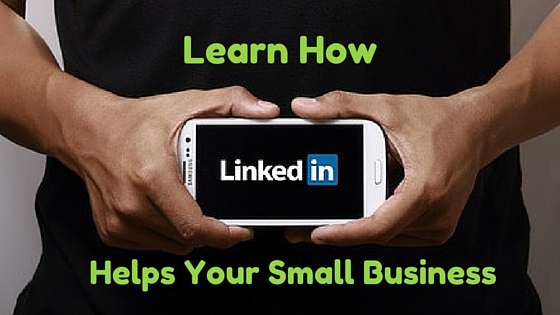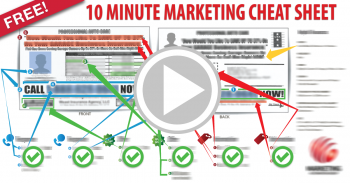- You are here:
- Home »
- Blog
Learn How LinkedIn Helps Your Small Business
 Focused social media marketing is important. Taking a run at Facebook, Twitter, Pinterest, and other channels may be appropriate for your company—but maybe not. For many small businesses, and their owners, LinkedIn is a key networking and marketing tool.
Focused social media marketing is important. Taking a run at Facebook, Twitter, Pinterest, and other channels may be appropriate for your company—but maybe not. For many small businesses, and their owners, LinkedIn is a key networking and marketing tool.
My job is making millionaires out of small business owners. I create and use strong business plans, marketing tech, and experience to help struggling entrepreneurs make it to that magic million. Part of the work of raising your income is raising your profile.
LinkedIn can help.
Seven ways for entrepreneurs to use LinkedIn
At the moment, LinkedIn is the prime business networking social media tool. Launched in 2003, the company reported earlier this year that it has 365 million users in over 200 countries. There are a number of ways you can use, and contribute, to LinkedIn to cultivate leads, develop relationships, and learn from others.
Consider these tips:
- Your profile: LinkedIn is not just for job hunters anymore. Besides growing your professional network, LinkedIn is a wonderland of individuals, companies, and groups to generate business and referrals. It starts with your profile. Before you create your business profile, know your target audience. Carefully craft your profile to speak to your audience—and create authority.
- The SEO part: Blend relevant keywords, terms, and phrases throughout your profile. Consider titles, headlines, and include compelling content. Write and post blogs, share reports, post presentations, projects, video, and other links. Don’t forget the profile picture—you will get more views, connections, and results.
- Network: Build your network over time. LinkedIn is not Facebook, so think about connections and the community you want to build. Give thought to invitations beyond seeking new clients. If you connect with a person, and then immediately solicit business, chances are good you will lose the connection. The branching network of your LinkedIn connections keeps you in the mix, and sometimes creates serendipitous opportunity.
- Build influence: Just as you would ask a client to refer you to friends, ask clients and good friends on LinkedIn to write recommendations, and endorse your skills and services. LinkedIn is a reputation economy, the more you interact, write blogs, share content, and reveal yourself as a subject matter expert and all-around great networking associate—the more you showcase your personal and professional brand.
- Go for Groups: LinkedIn Groups are a great way to network with colleagues, build your subject matter authority, and stay current on news relevant to your brand. Aim for groups in your industry—or that relate to professional support for entrepreneurs. Get good advice and ideas, and share content when it is appropriate and adds value.
Be aware that blog posts considered to be spam by others could lead to suspension of your ability to post to groups. LinkedIn Side Wide Automatic Monitoring (SWAM) can be triggered by a group owner if they believe your posts do not align with the purpose of the group. SWAM is frustrating and leaves you unable to post unmoderated content in a LinkedIn group—with no system of redress.
- Use Company pages: Create a Company page profile for your business, boost connections, and build and maintain your brand across LinkedIn networks. Promote LinkedIn to employees throughout your business, and extend your reach each time an update is posted. Ask employees to guest blog. Use your Company page to preview and introduce products and services, and offer helpful information. Cross link with your website to drive traffic, create authority, and develop leads. On your Company page, blog, or website, use narrative and success stories to build engagement and illustrate value.
- Mind SERPs: Search engines look favorably at LinkedIn Company pages. Be sure to optimize the Company page, your profile, blog posts, and other content on LinkedIn. LinkedIn offers analytics to your page administrator to help you gauge and understand activity, as well as keep your content marketing strategy fresh. Via groups, and contacts, LinkedIn helps you keep an eye on your competition and trends across your industry.
Once you are set up with LinkedIn tools—use them. While it takes time to build and maintain a small business presence on LinkedIn, it is a relevant channel that moves you further into your sales, and industry stream. You may not have the time, or expertise, to create a LinkedIn presence, so consider using a consultant to get you up and running—and turn your energy toward running your business and engaging the future.
Do you want to earn more money and worry less about your business? I can help. Call me at 585-633-7563.
Yours in profit,
Bob Britton
What is the Value of Buzzwords to Small Business Owners?
You have seen them, heard them, and used them. So have I. Buzzwords—there are a lot going around. Buzzwords are phrases that are shorthand for something meaningful in the culture at the moment. Harvested from television, thought leaders, politics, and the world at large, buzzwords are often a fast way of saying something more complicated.
Every so often you see an article listing the top ten or 20 most overused buzzwords. It is an easy, entertaining topic. But business buzzwords, whether overused or not, provide reminders of valuable ideas that could help your business.
Thinking outside the box and that kind of thing
Old and new, buzzwords have something for everyone. My job is to work with entrepreneurs to help them create value. Value is a big buzzword—but also the perfect word to define why someone should want to buy the product or service that someone else is selling.
Let’s take a look at some buzzwords of note, and what they might mean for you as an entrepreneur:
- Win-win: This is a great phrase, which has been around a long time. It rolled into the culture with the alternative dispute resolution (ADR) movement, and techniques like negotiation, for people to get what they want without bankrupting their businesses through litigation. For the entrepreneur, win-win is all about building the product someone wants, and charging a fair price for that asset. Too often, small business owners develop a great service, and charge too little. Sure, you have customers, but selling at a perpetual loss eventually stifles or destroys your business. Be fair—to yourself, and others. Win-win—a great product or service sold at a profitable price—is something you should always aim for.
- Core-competency: Thrown around a lot, especially in tech and human resource fields, core competency is an important word for the small business owner. Time and again, I ask my clients what they want to be doing, and I work with them on what they should be doing as the owner of their business. Way too often, they spend their time on tasks that could be done by others. As an entrepreneur, you must tend to your core competency—i.e., the work in your business that only you can do—and delegate the rest.
- Think outside the box: This old term was practically a mantra for an incoming generation of innovators, tech talent, and business owners. For entrepreneurs, thinking outside the box is not a buzzword—it is a necessity if you want to stay relevant in the marketplace.
- Storytelling: Although it is a new buzzword, storytelling is far older than the marketing industry. Storytelling is all about another buzzword, engagement. Humans are attuned to narrative of any length. For example, case studies are storytelling. The kind of engagement created by storytelling helps you explain your products and services, build a solid customer base, and draws your clients into an ongoing relationship with you and your brand.
- Big Data: The term Big Data is often used by marketers telling you that you need more Big Data to know how to sell to your customer. But, Big Data is actually just a lot of information that we now have the technology to capture. To use Big Data, you have to be smart and know what data you really need—and how it can help you. I work with marketing automation and help my clients fine-tune their data needs, in order to personalize and enrich the buying experience of their customers.
- Millennials and Boomers: Some buzzwords that describe your consumer audience are Millennials and Boomers. The Boomers were born after World War II and are pushing big changes in health care, retirement, and other services. Millennials were born between 1982 and 2004. These young adults grew up with tech and represent a strong market segment for goods and services. Strangely, no one talks much about the so-called Generation X, individuals born between about 1961 and 1981. Growing up on the cusp of the technology boom, Generation X’ers are in prime purchasing years and should not be ignored.
- At the end of the day: Pithy but perfect, at the end of the day, is the goal of your business planning. Always understand the bigger picture, your goals, and how much money you need—and want—to make from your small business enterprise. With no horizon line, you have no idea where you are going. Create structure, get advice, and adjust your business goals as you, and the economy, change.
Making bank. It means earning a profit. When you want to make more money by working smarter not harder, call me at 585-633-7563.
Yours in profit,
Bob Britton
These Factors are Impacting Small Business Owners Today
 It’s a wild world. We talked about VUCA—the sweeping forces keeping entrepreneurs on their toes. But do you want to know the real-world factors that impact these forces? Let me tell you.
It’s a wild world. We talked about VUCA—the sweeping forces keeping entrepreneurs on their toes. But do you want to know the real-world factors that impact these forces? Let me tell you.
Running a business is not what it used to be. Some things remain—good planning, structure, pricing, and marketing. You do not need a lot of money to get into business—but don’t be undercapitalized. These days, it isn’t enough to want to “disrupt” your industry—it’s been done already. Now is the time to get smart about market forces because volatility has become the norm.
The market belongs to the nimble—three views to keep in mind
Do you have a great product or service? Let’s assume that your marketing is working for you, and then you hit a bump, or you lose an important client—you’re sunk. How do you pivot and what are the factors that can help you keep moving?
I work with entrepreneurs with brick and mortar and virtual storefronts. My goal is to help my clients make money—and keep making more. Profit flows to those who make smart choices, and take necessary, informed chances. That is what I do—help small business owners understand their choices—and chances.
Change is constant, and here are some important features all entrepreneurs should be aware of:
- You are important: Sure, everyone is important. I mean your brand—your personal brand, not only your business. For small business owners—your personal brand is often what gets you a job, or loses it. Wherever your financing is coming from, investors want to know who they are dealing with, whether you can be trusted—do you have a history of smart decisions and responsible behavior? Especially with start-ups, or new ventures, a great deal of big business still requires you to pass the smell test before someone buys from you—or sinks money into your efforts.
- Changes in the system: Stuff happens—all the time. The big picture changes depending on what channel you watch. Consider the influence of just a few overarching systems including:
- Weather: The weather is a huge system that has a big impact on business. According to the National Center for Atmosphere Research, the wily ways of weather patterns can influence the U.S. economy to the tune of $485 billion per year. Production, supply, manufacturing, energy, transport—are just a few criteria impacted by weather. Climate change affects where people live, what they buy, and where they go to spend their dollars, and their careers. Like the economy, the weather is not expected to settle down anytime soon. Keep it in mind.
- Trends: With social media, content marketing, and marketing automation, you can reach out and touch a good portion of not just your client base—but the Create the next viral video and enjoy your fifteen minutes of fame, or a few million dollars brought to you by your ability, and the ability of your team, to tap into a shifting, restless world eager for the next new thing.
- Tech: Tech is no longer just an industry. It is what you need to build into your business through innovative marketing, better processes, supply chain decisions, communication, and more. You may have a great idea, or a well-established business, but if you cannot move with the times on technology—you are going to get left behind.
- Know where you are on the curve: Are you just out of college and vying to build a no-cost start-up into something big? Have you been on a career track for ten years and ready for a change? Maybe you are part of the third-age, the Boomers or close to them, with decades of valuable experience and a desire to put it together in a different way.
Whether you are a micro-entrepreneur, or a successful CEO planning to step out, it is important to know the right steps to get where—and what—you want. Do you want to struggle for the next ten years for sweat equity? Or make some real money to support your current or hoped-for lifestyle? Work with a mentor, or business counselor to find your place on the curve, develop the right questions and be sure you have the right answers to get your best chance at success.
A big part of a profitable business today is learning how to successfully fit into a world of change. Your biggest assets are what you bring to the table in the form of knowledge, experience, adaptability, and willingness to seek and receive good advice.
When you want to ride the wave, instead of being swept up in it—call me at 585-633-7563. I can help you make the money you want.
Yours in profit,
Bob Britton
Looking for Profit in all the Wrong Places
 Take Charge of the Numbers to Take Charge of Your Business
Take Charge of the Numbers to Take Charge of Your Business
I talked recently about numbers that tell us something about the current business climate. Now let’s talk about the numbers that make, or break, your business.
Dawn Fotopulos is the HiddenProfitProphet. I had a chance to sit down recently with this award-winning author, educator, and entrepreneur to talk about how small business owners can get a handle on their financial details, do better business—and make more profit. I got to know Dawn when she joined my MAG Elite Mastermind Group.
Dawn helps small business owners find profit where they least expect it—in their balance sheets. She wrote the best-selling book, Accounting for the Numberphobic: A Survival Guide for Small Business Owners, and offers great tips and advice on her website.
Smart financial moves—get the inside scoop from an expert
Talk to a mentor, advisor, or top talent in your field when you or your business drift. The later you look for help, the harder it is going to be on your business—and your profit. I work with professionals like Dawn to fine tune business plans and establish marketing strategies to crush their competition.
I talked to Dawn to get her take on financial questions common to all small business owners. Here are some of her responses to my questions. To learn more about Dawn’s great ideas—read her excellent book.
Q. At some point or other, entrepreneurs hit a wall. When struggling with their bottom line, what is the biggest mistake small business owners make?
A. Every business owner thinks if they’re having trouble paying the bills, they need more customers. They might very well be scaling an unprofitable business! In fact, that’s what many used car dealers are doing. They think if they sell more cars, they’ll make more money. It’s exactly the opposite. If you’re losing money on every deal, you really can’t make it up in volume.
Q. Do you find entrepreneurs are good with ideas, but challenged by their financial statements? If so, how are they challenged?
A. I took a poll at The New York Times Small Business Summit Conference over a five-year period. During that time, I asked 5,000 small business owners one simple question—“True or false, a Net Income Statement and a Profit and Loss Statement are the same thing.” Only one out of one hundred business owners knew that was true. That’s not a problem—it is an epidemic. Would you ever drive your car with your eyes closed? No. Then learn how to read your financial dashboard. By financial dashboard, I mean your Income Statement, Cash Flow Statement and Balance Sheet. These documents are key to running your business and making good decisions. No matter what business you’re in, you must be able to answer three questions:
– Are you making money?
– Do you have enough cash to pay the bills?
– Are you building wealth or destroying it?
Your financial dashboard will answer each of these questions.
Q. Do you encounter small business owners who are afraid of the financial work in front of them? Why do you think that is? What are they most afraid of?
A. They’re not afraid; they’re terrified.
It’s too intimidating. They feel like they have to become an accountant. If they’ve taken accounting courses, they never understood debits, credits and reconciliation. What if a business doesn’t need to learn how to keep the books—but just learn how to read their financial dashboard?
Many think their accountant’s job is to read their financial dashboard. Your accountant will not run your business any more than your mechanic will drive your car. It’s your job to navigate.
Your financial dashboard shows you how. Most people are intimidated because the topic is complex and often taught by very knowledgeable but really boring people. That’s why I wrote the book and had it illustrated by a Disney artist. It was time to make running a business fun, exciting and interesting again. If you look at the comments on Amazon, you’ll see many people who were once intimidated are now finally gaining the confidence they need to run profitable, cash-rich companies.
Q. You have written a well-received book about diving into financial details. Can you explain a couple of concepts from the book, such as what are the most important financial documents and how can these documents help a small business owner?
A. The Net Income Statement is like the speedometer in your car. How fast is your business producing profits? Is your business beyond the breakeven point (is it self-sustaining)?The Cash Flow Statement is like your gas gauge. It will show you how much cash is available to run the company and for how long. Your Balance Sheet is like an oil pressure gauge. Too little pressure (debt), and you don’t have ignition. Too much debt, and you’ll go bankrupt. The Balance Sheet is also the Net Worth Statement of the business. Every banker and investor scrutinizes this statement. Make sure you know how to read it, and improve on it from operations. These statements are your GPS for running your business. Think about it, if you want to get to your destination, wouldn’t it be helpful to have a path to get there? I can get to Ogden, Utah, by trial and error but it will take my lifetime that way. These financial statements, like a GPS, get to you the promised land of living off your own cash flow a lot faster.
Q. What are the basic steps an entrepreneur can take to manage these important details and create profit?
A. Gross margin. Gross margin. Gross margin. Ever watch Shark Tank? Like the sun rising in the east, every business owner is asked, “what are your margins” on their products. Why? Because margins drive profitability. There’s a lot more I can say to your question. The best thing to do is read my award-winning book, “Accounting for the Numberphobic; A Survival Guide for Small Business Owners.” It won “Best Business Book of 2015 in Economics” from Small Business Trends. The book takes you by the hand and explains, line by line, what’s happening in your business and provides you simple, no-cost strategies to fix the broken things. It should be mandatory reading for anyone going into business.
Q. Are there accounting and profit choices you would make differently for a products-based versus a service-based business?
A. Valuing time is perhaps the biggest challenge for service providers. Also, managing invoicing and billing becomes more complicated, especially for service providers who work on multi-phase projects. Time is your only recoverable asset so keeping track of that, especially as it relates to direct labor costs, is crucial.
I’ve seen many service providers who are so busy giving great service to their clients, they don’t track how much time that’s actually costing them. A large client could in fact be their least profitable client.
In either product or service businesses, the owners need to look at their gross margin two ways—by product or service and by client. For the business owners who have purchased my Hidden Profit Academy courses, they get this. That gives them visibility to really know what products or services are working hard for them and which ones to change or eliminate.
Q. In a downturn or even when the invoices have not yet been paid, how can small business owners maintain their cash flow?
A. First, you have to diversify your client base. If you only have one or two big clients, you’re at risk if either of them leaves or falls on hard times.
Second, you have to have two ways out of the room. Always apply for a credit line when you don’t need it, then you have it if cash gets tight.
Stay on top of your accounts receivables aging report like a hawk. Know exactly who owes you money, how much, and for how long. If any receivable ages beyond 30 days, the likelihood you’ll ever get paid goes down dramatically.
Learn how to collect outstanding debts from clients. This is a more important skill than learning how to sell. Business owner need to learn this early on. My book provides sample openings and dialogues to do this painlessly. Chapters 5 and 6 are worth the entire ten chapter book.
Q. You have talked about simple steps, “One Thing,” to add cash to your business account right away. Can you give us one or two tips?
A. Make sure your invoice includes not just the date of delivery, but what you delivered to your client. Remind them of what a great decision they made to hire you. You didn’t just build a website, you improved the customer experience and thus the client gained increased traffic and engagement. Once they read this, they can’t wait to pay the bill. Stop waiting too long to send the client an invoice. Invoice them weekly or bi-weekly. You’ll get paid faster and the client won’t be overwhelmed.
Q. What financial trends do you see with small businesses, the recovering economy, and a faster paced, more volatile market for goods and services?
A. Nimbleness is key. Don’t make or accept long-term commitments. Be on top of technology. Everything you can do to save time, decrease error rates, and to streamline daily processes is worth your investment. In terms of macro trends, I’m most concerned about central bank policy. No society in the history of man has survived currency debasement over the long haul. Just ask the Romans.
Take control of your business by understanding your real financial situation. Get good counsel about your financial dashboard—and your business or marketing plan—to make more money doing what you love. When you are ready to ramp up your income—call me at 585-633-7563.
Yours in profit,
Bob Britton
Signal or Noise? How Do Your Help Your Customers Choose You?
 You have a terrific product or service—and a lot of competition for the business. How do you help your target customer choose you?
You have a terrific product or service—and a lot of competition for the business. How do you help your target customer choose you?
My business is helping you identify, attract, and land the customers you want, to make the profit you need. As a small business owner, I know what works, and how to use marketing technology to steer business your direction, and keep it coming.
But when it gets down to it, how do you help your client hear your message, and understand your brand, through all the noise? It is not as hard as you think.
The dynamics of choice and marketing
A lot is written about the psychology of choice. Drill into the topic and you’ll find research looking at why people make the choices they do.
Understanding why people make choices is important. As small business owners, we want to know how to influence choice to get more business. Poor marketing and product lines mean your premium clients go elsewhere.
As a consumer, you know what it takes to convince you to buy. Taking that perspective is important when thinking about how to sell to your client base. Consider these points about the experience of choice:
- Choice: It is important to do what you do best. If you sell one product, or one type of service, you need to be the absolute best and understand that you are working in a niche market. In a TED talk, author Malcolm Gladwell talks about choice—and spaghetti sauce. The take-home point is that there is no one kind of human, so offering few products, or services, could be a limiting factor to your business.
- Too much choice: Plentiful research bolsters the belief that too much choice is not a good thing. Offering a dizzying array of information, products, or services is just that—dizzying. Chances are good you will land a customer if you have a lot of choice—just make sure the choice is presented in a way it can be consumed. Design your website with filters, make auto-suggestions, enable reviews, and offer pages with a limited number of products, to create a pathway to purchase in digestible bits.
- Bias and other fine qualities: Your client approaches your business with pre-conceived ideas. How you present yourself, or your product, plays to their needs, fear, and identity. Humans place inordinate weight on the first information they receive about a person, place, or thing. If a good friend liked your restaurant, your new customer is predisposed to like it, too. If a client reads a negative review of the service you sell—you need to work harder to overcome that bias. If a customer is in need of basic information, your knowledge of your product—without an initial sales attempt—gives you a chance to create the image of a knowledgeable, trusted ally instead of a pushy salesperson.
Sales work is mostly psychology, with products mixed in. Know your customer, and know what you are really trying to sell.
To get to the sell, start at the beginning
Most people can sell something once. To profit and grow your business, you have to meet the needs of your customer repeatedly. Marketing hype has its place, but the bottom line is that you have to understand your business from the viewpoint of your customer.
There is a well-known story about the angel investor who kick-started Apple. Everyone starts somewhere and Apple founders, Steve Wozniak and Steve Jobs, originally worked out of a garage. Their first investor was Mike Markkula. As the story goes, Mr. Markkula also wrote a three-part marketing platform that continues to serve this very successful company.
The three mandates written by Mr. Markkula in 1977 remain effective and include:
- The quality of empathy: “We will truly understand their needs better than any other company.”
- The ability to focus: “In order to do a good job of those things that we decide to do, we must eliminate all of the unimportant opportunities.”
- Recognition of people to impute: “People DO judge a book by its cover. We may have the best product, the highest quality, the most useful software etc.; if we present them in a slipshod manner, they will be perceived as slipshod; if we present them in a creative, professional manner, we will impute the desired qualities.”
Take what we know about the science of choice, combine it with rock-solid marketing philosophy, and a great product, and you are on your way to small business success.
By understanding your own business, you can help your customer make a choice that benefits both of you. When you need help understanding the bottom-line of your business, call me at 585-633-7563, I can help.
Yours in profit,
Bob Britton
Business: Going Up! Going Down! What’s Behind the Numbers?
 One report says business start-ups have never looked better. Another survey talks about persistent decline. With the business outlook in churn, what do the numbers mean to you?
One report says business start-ups have never looked better. Another survey talks about persistent decline. With the business outlook in churn, what do the numbers mean to you?
While you focus on landing that client, or pivoting your marketing message, the economy is moving fast. Getting to market with a good plan, new ideas, and great products makes for a winner, but it is also important to understand your business ecosystem—is it healthy?
New reports: Do statistics lie?
Numbers are important to any business owner. Your bottom line, your profit margin, your price point—every number carries weight. In terms of business climate, let’s take a look at some overall reports:
The Brookings Institution: This organization recently released a study on business dynamism, the churn that occurs when companies start-up, succeed, grow, or fail. Its findings include:
- Statistically, a new business starts each minute, while another fails every 80 seconds.
- Business dynamism, the growth and decline of companies in the private sector, has fallen for years.
- Reduced dynamism results in slower economic growth.
- New regional and national measures are needed to fuel small business growth.
Kauffman Index: According to a study from the Kauffman Foundation, 2014 saw the strongest entrepreneurial growth since 2010. Some interesting entrepreneurial points include:
- Most new small business owners are men, at approximately 63 percent. According to the report, the rate of new female entrepreneurs is near a two-decade low.
- Called opportunity entrepreneurs, owners who are not unemployed—and starting a business by choice—represent the largest number of new small business owners, at more than 79 percent.
- Up from just over 13 percent in 1997, immigrant entrepreneurs now account for more than 28 percent of new small business owners.
Notes Kauffman study author Arnobio Morelix, “When broad-based entrepreneurial opportunity improves at this pace, it’s an indication that the labor market is slowly recovering.”
Global Entrepreneurship Monitor (GEM): GEM is a joint collaboration involving more than 69 countries and conducts research on entrepreneurship around the world. Some GEM data on American entrepreneurs includes:
- In the United States, there are approximately 24 million entrepreneurs, representing about 14 percent of the population. This represents a high-water mark for the 16-year GEM study.
- More than six percent of start-ups currently occur within organizations—meaning entrepreneurial efforts are being supported through, and by, larger corporate environments.
- Of the surveyed countries, the United States reports the highest number of entrepreneurs between ages 55 and 64 years of age.
- Twenty-one percent of entrepreneurs expect to create 20, or more, job positions in the next five years.
Why do numbers matter?
With absolute certainty, I can say these reports agree on one point—it remains an unsteady business environment. The confluence of economic indicators, new jobs, oil prices, and global politics play an important role in the local business environment where you operate your company.
I work with entrepreneurs to maximize the profit they earn—or will earn when starting up a new business. In the initial one to three years of your business lifecycle, the seeds of success and failure are sown. When I work with business owners, we look at expansion—or contraction—when needed, or replacement of outmoded operations with lower cost marketing automation to reduce labor and time expenses.
To gauge risk and support growth, it is important to keep an eye on the economic climate for a couple of reasons:
- Knowing the cost of goods is important. The Producer Price Index (PPI) looks at the cost of goods and materials for manufacturers and producers. When the cost of materials goes up—you need some savvy to understand whether you should raise your prices, or hold on. Keeping an eye on the overall cost of materials helps you plan and price.
- In August, the overall employment picture did not change much, with some states reporting job loss—others reporting job gain. Regional and national unemployment trends are important to entrepreneurs. National rates give you a birds’ eye view of a larger cycle. Regional rates give raw information to plan for temporary downturn, or uptick in customer spending.
- In any particular season, it is good to know about consumer confidence. By some measures, 45 percent of reporting households noted a better financial picture in August of this year. When consumer confidence is up, your clients and customers may spend more. At present, recovery from the Great Recession continues, with bumps from volatility in the stock market, and oil prices.
What’s in a number? Plenty. When you want to understand your bottom line—and boost your income—call me at 585-633-7563.
Yours in profit,
Bob Britton
Marketing Tips: How About Your Website?
For a million reasons, a website is a good idea. It gives your business, your brand, and your marketing a starting point. How does yours rank?
A website is more than a couple of pages with pictures. Unless your business is website development (and in most cases, you still need a LOT of help understanding what makes a website CONVERT visitors into buyers), getting help with your website is a good idea. My business is helping entrepreneurs structure their business and align marketing and business practices to make good money. I have not yet met a client who was not interested in making better money—and a good website is a smart place to start.
You have a website—now what?
The chances are good you already have a website. An employee, consultant, or maybe even a friend helped you get it together. Until you have time to optimize the site—it will do. So what does “optimize” mean?
Optimizing a website means different things to different people. Basically, it means making the most of your digital real estate. That is everything from the look and feel of your site, to the tools you use to analyze visits and conversions. Here are some steps to re-approaching your website as a marketing tool, and a placeholder in the digital world:
- What is your goal? A website may be largest part of your digital marketing campaign. Other channels include social media like Facebook, Twitter, Instagram, and Pinterest. While social media channels are a great way to interact with leads, amplify your brand, and drive traffic toward your products, your website is your institutional online presence. As you rethink your website—and your marketing—consider the overall purpose of your website, and how you want to allocate resources to keep your website, and your social media channels, fresh and up to date.
- Who is your customer? Your client or customer profile is essential to effective website design. How can you create and populate a website with interesting information if you cannot identify your customer? I work closely with small business owners to identify, and target—through marketing automation, online presence, and service—clients willing to pay more, for more value. Be sure you know who you are pitching at—it makes a lot of difference in your bottom line, and your profit.
- High quality content: Is your website one big advertisement? Splashy pictures, slogans, and product or services? Google places a premium on sites with a little more to offer—like free white papers, tip sheets, products, and other authoritative content that help users find the answers they need. A blog is a super tool for demonstrating knowledge of your business, and your product. In addition to offering free information on questions specific to your service or business, a blog is a valuable tool that establishes and demonstrates that you know what you are talking about, and can provide high value to your client, or customer. High quality content, through blogs, articles, video, and other freebies improves your profile, and oftentimes, your search engine rankings.
- Be compelling: Do you offer discounts, or periodic flash sales online? Have you solicited and posted recent, heartfelt testimonials about your service or product? Is there anything on your site—like passion for a charitable cause that sets your business—and you—apart as exceptional? Do you offer online chat during business hours? Few things gain respect more quickly than rapid, and reliable, customer service, whether in person, on the phone, or online. Is there any way for users to interact with your site—such as by commenting on a blog post, or offering photographs of their use of your product? Small moves to create personal engagement lead to big dividends.
- Social Media: Do your research, use the right channels—and keep it fresh.
Whether it is website construction, content, or social media maintenance, many small business owners make the mistake of trying to do it themselves. As I have said before—do not spend time learning something you do not want to do every day. If designing or writing high-end websites is your business—learn the ropes. Otherwise, do not spend every day trying to figure out how to keep your Facebook feed fresh—pay someone good to do it for you.
Talk to friends, get references, and find consultants or freelancers in the business of website design, social media, or blog maintenance. Use your resources, instead of taking your own time from the business tasks that only you can—or want—to do.
Effective marketing means more than a well-built and maintained website—but it is a good place to start.
When you are interested in making better money doing what you love—call me at 585-633-7563.
Yours in profit,
Bob Britton
Rethinking the Unthinkable: Should You Fire a Client?
Marketing is all about generating solid client leads and conversions. We’re in this to build business, right? Sometimes marketing is also about knowing when to let a client go.
If you are a small business owner, you probably have—or have had—clients that just did not work out. For their reason, or yours, it was not a good relationship. My business is helping entrepreneurs craft a business that makes them real money.
Good reasons to let a client go
Client issues are different depending on your position in the business lifecycle. If you are a start-up, stretching services, straining your finances, and delivering the impossible may be your idea of landing a client. Established entrepreneurs may have clients on board that are not returning profit, compared to time needed to maintain their account. How do you know when to cut a client loose?
I have been where you are. Struggling with several businesses, it took me a lot of effort until I hit on a business strategy that worked—no matter what business I took on.
Today, I help clients with strategies for value, pricing, marketing, and production to create strong—profit-producing—small business enterprises. An important part of running your business is learning to recognize the clients that support your bottom-line. Consider these tips for identifying problem issues with clients—or potential clients:
- Not your expertise: Tempting though it is, avoid taking on clients who are asking for services outside your defined area of experience. If it is a field you are working into, or have an interest in exploring, by all means, take the challenge. But—small business owners anxious to succeed may take on projects or requests they are not set up to address, and end up at a financial loss for the time spent. When a client wants a product or service you do not provide, offer a referral or consider partner relationships with other small business owners who provide what your client needs.
- The money is not there: I have said this before—do not get into pricing wars with other business owners. You cannot win if the game is to undercut the competition. Unless you have the edge on a high volume business, the best position for an entrepreneur is as a premium player. Clients who haggle over every bill, are late paying, or always looking for a deal, are not the kind of clients who support your long-term growth and financial success. If you are an established business owner reconsidering your price point, take the time to speak with legacy clients. Let them know you are repositioning your services and offering a greater value proposition. Show them how they will get better—and more—service, even as they pay a higher price. If established clients are unhappy, let them make the choice to move on, but do not make special pricing deals to maintain unprofitable accounts.
- Bad business: Do your business on the sunny side of the street. Shady clients looking to make you a deal, or asking you to skirt a regulatory situation, are nothing but trouble. Turning down a sizeable account or a big payout may be tough—but it is worth it. In a wired world, reputation management is essential to your brand. Make sure you know what is being said about you—or about others you might be considering for a business relationship.
- Just not worth the trouble: We all have them—clients who pay on time, but cause you to involuntarily flinch when you hear their name. They may be argumentative, take a lot of time, always ask for a special deal—just something that makes doing business with them difficult. If it is your bread and butter client—you are stuck for the time being. When that is the case, it is time to hit your marketing strategy hard, and start looking for clients that offer a better reciprocal relationship.
- Is this you? A start-up business owner may ask you to take lower fees in exchange for stock options. Unless it was Google or Facebook—most times, these arrangements do not pan out. Or, you offer services involving consulting and guidance that your client never takes—often to their detriment. These examples point to a client that is just not a good fit.
Many small business owners recognize these clients, but fear turning them away, or letting them go, for financial reasons. Give yourself permission to choose the clients who really need your services, and who support your steady success—like you support theirs.
When you need to develop clients who appreciate what you have to offer—you need a marketing plan that delivers. Call me at 585-633-7563 to kick-start the right kind of client development for your company.
Yours in profit,
Bob Britton
Starting Up or Starting Over—A Few Things to Think About
Thinking about starting or relaunching your business? Both require serious consideration and a long-term plan.
Every year small business owners start, relaunch, and sell businesses. There are a million reasons why. I work with entrepreneurs to start and grow their businesses with the aim of turning a profit. A big profit. When you make more money, you can offer the service you want—at the price that sustains your lifestyle choices and family.
Starting up—five things to know
When considering starting your own business, there is a lot of work to be done. There are resources that can help you with the basics, and you need to give careful thought to questions like:
- Why do you want to start this business? Is it a mid-life moment, job—or even relationship—frustration, or is the time right for you to grab that idea and put your shingle out there?
- What is your value proposition? Go no further. I work every day with clients who have been in business for years, treading water without a lot of profit, who have no value proposition. What is a value proposition? It is how you intend to stand out from the crowd—what makes you so different that clients and businesses want to work with you. Types of value propositions include:
- Quality: You offer a product or service so much better that your business is the obvious choice
- Custom: Your services or product are special, or one-of-a-kind that cannot be obtained anywhere else
- Convenience and service: You make it so easy for people to get what they want that they have no reason to go elsewhere?
- You are us: You market your product or service so well, that your clients feel you know them, and that you would move mountains to make sure they are served
These are just a few types of value that make you different from the also-rans. Your value proposition can make or break your business—make sure you know the reason people would want to spend their money on what you have to offer.
- Who are your customers? Are you selling to a small, rarified niche of clients, or are you aiming for mass market? What are the benefits and downsides of both? What research have you done to prove you have a marketable product or service?
- Who—and where—is my competition? Are you in this alone? Do you have a stand-out product no one knows about yet? Getting to market fast is important. Are there lots of others at your price point selling the same thing? How are you going to compete? Are you a storefront, Web, or both? What is your marketing plan for each or other channels?
- Pricing: Along with marketing, competition, and value proposition—the price of your product is integral to your operation. Your pricing is affected by questions you might not know how to answer right now—how do you want to live, what kind of profit can you really make? What are the production, operation, marketing, and tax implications?
These are the types of questions I work over with entrepreneurs. Make sure you know these metrics inside and out before you invest your money, time, and a good chunk of your life in a new business.
Do you need to reboot?
Relaunch, pivot, and rebrand are all words used to discuss actions needed when you hit a wall—or a profit plateau—with your business.
Let’s say you have a moderately successful business—or you are just getting by. The numbers still look decent, and you want to stay with the business you built—but you are not making enough money. A lot has changed since you started your business and you have no idea how to make the most of the financial, marketing and social media tools now available to you.
Consider these points when you need a fresh start:
- A relaunch offers you a way to reintroduce your business, service, or product. Pivoting your business gives you a chance to offer a different value proposition, retool your service and operations, and introduce a new profit platform.
- Get professional guidance when analyzing the marketplace for your relaunch. Revisit and refresh financial analyses to inform your decisions and help you make good choices.
- Retain a marketing firm or consultant to refresh your website and handle social media, signage, and client or customer engagement campaigns.
Whether starting new—or starting over—think about the reasons to be in the business you are in. Ensure your own personal and financial interests are strong enough before making commitments to move your ideas forward.
When you need help with a start-up, or refining your business plan for a relaunch, call me at 585-633-7563.
Yours in profit,
Bob Britton
Business Travel Tips for Summer’s End
Whether your business is a start-up or long-established, you need the most from your traveling time.
Like you, I am an experienced traveler. F or business, and for our Marketing Automation Group Live Events, I travel routinely all over the United States. I enjoy travel, especially when I can build in value—wherever I am.
or business, and for our Marketing Automation Group Live Events, I travel routinely all over the United States. I enjoy travel, especially when I can build in value—wherever I am.
On the road: Tips for busy entrepreneurs
At the end of summer, and as the back-to-business vibe kicks in, it is worth revisiting whether you can get a little more time for you—or your business—on days you are traveling. Consider these ideas when you want to get where you are going, a little easier:
Expedited screening: When traveling by air, you spend a lot of time waiting. Reduce the delay by registering for programs like TSA PreCheck, Global Entry, and other fast-lane programs. Choose the service that suits your travel habits or geographical location.
- Transportation Security Administration (TSA) PreCheck: TSA Pre gives you a faster way to move through security screening at most airports across the United States. With a shorter line through screening, you need not remove shoes, liquids, or laptops from your carry-on luggage. The cost of TSAPreCheck is $85 for three years. You can apply online.
- Global Entry: At $100 for five years, Global Entry is more expensive than TSAPre, but there are more perks. As the name implies, the service applies to passport and customs entry points at the United States border, not just within the country. Once registered, and returning to the U.S., you need only present your passport or identification at a Global Entry kiosk, scan your fingertips to verify identity and complete the standard customs declaration. Global Entry includes other services like Nexus, and Sentri, which offer similar expedited service to travelers to Canada and Mexico.
No expedited screening service guarantees that you may not occasionally be asked to step out of line and move through the usual security process. That said, you can save real time by taking advantage of programs that move you through security lines faster. Otherwise, try to wear shoes without laces.
Loyalty or not: Frequent flyer and other rewards cards just ain’t what they used to be. Because small business owners depend on affordable air travel, paying attention to these shifting, and sometimes shifty, programs is essential.
Delta Airlines recently changed the base of its popular SkyMiles reward system from miles traveled to dollars spent on airfare. Obviously, if you get a less expensive seat, correspondingly, your benefit goes down.
For any airline rewards, check the fine print. Because reward programs are changing, consider redeeming miles, and know the credit card cash-back benefits tied into airline points before applying. Remember that loyalty programs have nothing to do with loyalty. Manage frequent flyer miles with AwardWallet, TripIt, or other apps.
The devices: Make sure you charge all devices before you go, keep chargers with you, and carry small back-up charging devices. That said, the big risk for entrepreneurs traveling abroad is compatibility and security. If you travel often, you already know what your carrier provides. If you don’t already know—it is time to find out.
Information security, when traveling, is paramount. Some clients I know take temporary or blank devices when they travel. Many companies issue travel devices that are secure and wiped clean of proprietary and sensitive information. When traveling, consider these tips for devices that carry highly-sensitive business and personal data:
- When not in use, turn the device completely off.
- Before departing, make sure your device has all patches and appropriate security software installed. Create a temporary, or travel only, email account.
- Assume encrypted data can be captured, and do not expose sensitive information over free wifi networks. Do not use shared devices.
- Reset passwords before traveling, and upon return.
- Do not use your travel devices upon return until they are reformatted and software reinstalled to ensure ongoing security.
- Consider taping over laptop or other device cameras, and disconnect microphones.
- Disable any file sharing capabilities or network protocols before traveling
- Be sure to back up data.
- When abroad, register for security alerts.
Quality work time while traveling: When flying, pay attention to layovers. Sometimes less is not more. Airlines are boarding 45 minutes before flights now, making it a tighter squeeze if you face a one-hour layover. Layovers offer focused work time if you packed what you need, and prioritized the work you can do ahead of time.
Best for last—traveling can get you business: While you already have a business agenda, and a client to meet on your trip, consider business opportunities along the way. In coach, or business class, be friendly, engage seatmates, inquire about their business, and talk about yours—if they are interested. While waiting in line at restaurants, events, or conferences, any time is a good time to strike up a conversation with another business traveler. Endless stories are told of serendipitous meetings on planes, during delays, and in long lines that result in ongoing business, and even partnerships.
Most small business owners travel at one time or another. Plan ahead to make your trip as easy—and productive—as possible. The goal is enjoy the road, and achieve your business goals.
When at home, or while traveling, time means money. When you want to get more value for your time and more money in your pocket, I hope you will call me at 585-633-7563.
Yours in profit,
Bob Britton







